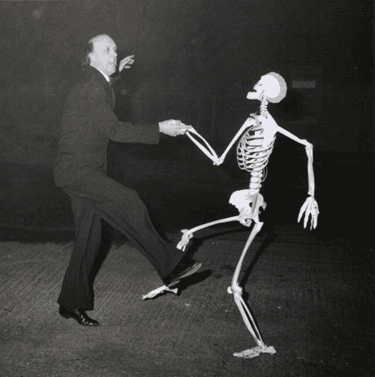
|
||||
Dome of Discovery
This was my first CD proper, and it was all my own work. Literally. I felt that, for a non-musician's first solo album, I needed to produce something really good, and to do it completely on my own, so that my musician friends could be confident about me as an artist and producer, not just as a songwriter, and would be happy to play for me on future projects.
I had just left my job, and with the help of my friends Lene Lovich and Les Chappell, in Norfolk, I had found the attic of a remote 17th Century farmhouse to rent for next-to-nothing. I rented out my London flat to students (who, amazingly, gave me no problems whatsoever).
I upgraded from my old 8-Track to a 16-Track, ½ inch, reel-to-reel tape recorder, and started trying to work out how a non-musician could make convincing, human music that wasn't just wall-to-wall synthesizers.

Apart from my vocals, virtually every note on the album came from the sampled sounds of real instruments played through an Emax sampler keyboard, as sequenced by my trusty Arari computer. However, in 1991 the technology of sampled sounds was nowhere near as sophisticated as it is today, and I was unable to find many of the samples I needed for the exceedingly strange, virtual ensemble that I had begun to hear playing music inside my head.
Unwisely maybe, but I wanted a punk cello quartet, an up-front, raucous choir with a operatic soprano soloist, four Mariachi-type trumpets, a Dwayne Eddie guitarist and a rhythm section with a Zydaco-style drummer. I had to make my own samples for most of this stuff; hiring a cellist and classical singers and getting them to play individual notes for me, one at a time. It took months, and was mind-bogglingly tedious work, but I was finally doing music full-time in the lovely Norfolk countryside, so I was a happy bunny.
I already had many of the songs just waiting to go, including four that I had originally written for Lene Lovich, but which she hadn't taken-up. As I remember it, the rest of them, written while the album was in progress, all came pretty easily, although the last track, the 'portmanteau' epic 'The Dying Of The Light' which ties up plot-lines from other songs, presented conceptual and lyrical problems What Done My Head In.
The arrangement and recording of this stuff was another matter, and some songs had to be recorded several times from scratch before they sounded right. My final (and inconclusive) struggle for the project came when I attempted to find a competent illustrator to paint the cover art.
Writing and recording an album on your own is one thing, but mixing it is something else entirely, and once the final track was finished, after about a year of this weird, solitary work, I took the music to David Lord, who had produced people like Peter Gabriel and XTC, and who I had got to know on visits to Peter Hammill's studio in Bath, where they shared a building.
He did a typically meticulous, painstaking and, above-all, musical job of the mix, and it came out sounding better that I had any right to expect from material recorded in what was a pretty low-tech facility. However, the final stage of the preparation of any record is the Mastering process, which starts with the stereo mix and adds that final pinch of fairy-dust using complex EQ and compression equipment under the control of a pair of 'golden ears'. In 1993, you still had to go to a specialist Mastering Room to get this done, and I just didn't have any money left for this rather costly process.
By the courtesy of Oedipus Recs, Fred Tomsett's own record label, 'Dome Of Discovery' came out just as it was, un-mastered, and still sounded pretty good, and eventually it sold pretty well. There is a link below to the small number of 'legitimate' reviews that the album gathered.
Fred did well by me and the CD, but the rights to the album reverted to me some time ago, and in 2002 I revisited David Lord's studio, where the great man was now able to 'Master' with the best of them, using a new generation of computer software and his own 'golden ears', and after eight years, we finally gave the album its finishing touch.
The Mastering process beefs-up and enhances, making weak sounds stronger and clearer. I always think of it as turning-up the knob marked 'Better'. The curious sound-world of 'Dome Of Discovery' certainly benefited in a big way. It was now louder, crisper and a lot more solid.
The last few copies of the original pressing still remain to be sold, and then I will have to think seriously about what's to become of the album. I would really like to see it continuing in print with its new sound, and certainly some new artwork. I'm still very happy with it as a piece of music. I might even be able to find a couple of bonus tracks for some added value, but I don't like the idea of ripping-off collectors by getting them to buy the same thing twice.
For this reason, the re-mastered album
is available, in the meantime, as a
download from the iTunes Store.
(You need to have iTunes installed
to use the link and to buy the album.)
| English language reviews of 'Dome Of Discovery'. |
|
| Edited interview about 'Dome Of Discovery', originally published in 'Pilgrims' No 23, August 1993 (Copyright T'Mershi Duween 1993). | |
| Complete lyrics of 'Dome Of Discovery'. |